Far-flung vineyards
South African vineyards have spread into some remarkable areas, way beyond the hub of Stellenbosch, since the quota system was discontinued in 1992. Many are tiny and bravely remote and, like the first four below, high lying with a continental climate.
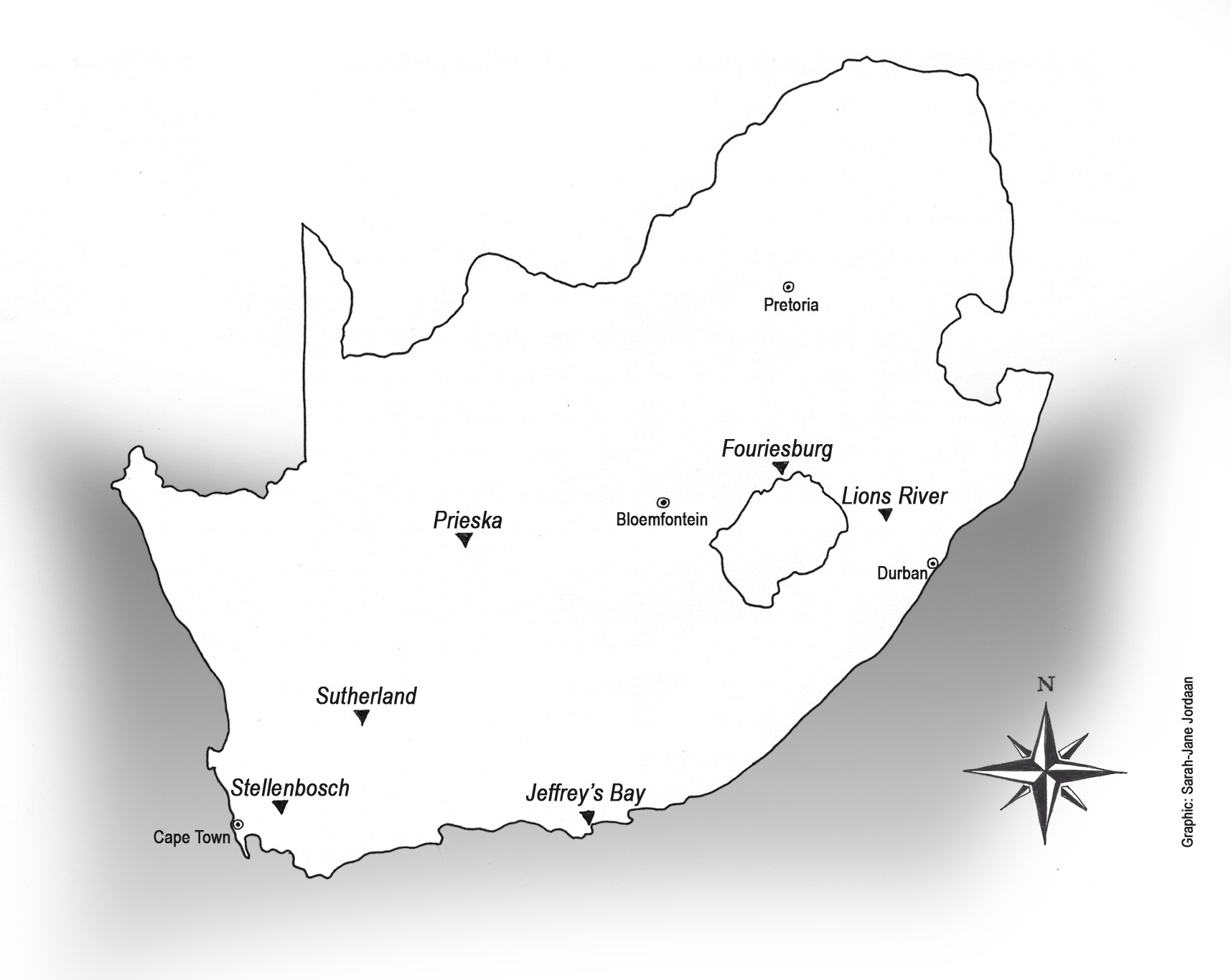
Map by Sarah-Jane Jordaan marking position of far-flung vineyards in relation to Stellenbosch, and major centres.
John and Trish Critchley established The Mile High Vineyards in 2008, planting two hectares of Shiraz, Pinotage and Pinot Noir in the Eastern Free State highlands, near Fouriesburg, around 1200 kilometres from Stellenbosch. At 1680 metres, these are arguably the country’s highest vineyards, producing cool-climate wines under the name, Bald Ibis Wines (WO Free State), after the rare Southern Bald Ibis, which is endemic to the area. Ripening early to mid-season so avoiding April frost, the grapes have thick skins and high acidity; these and the budding vines attract unwanted visitors in birds and Duiker (small buck) respectively.
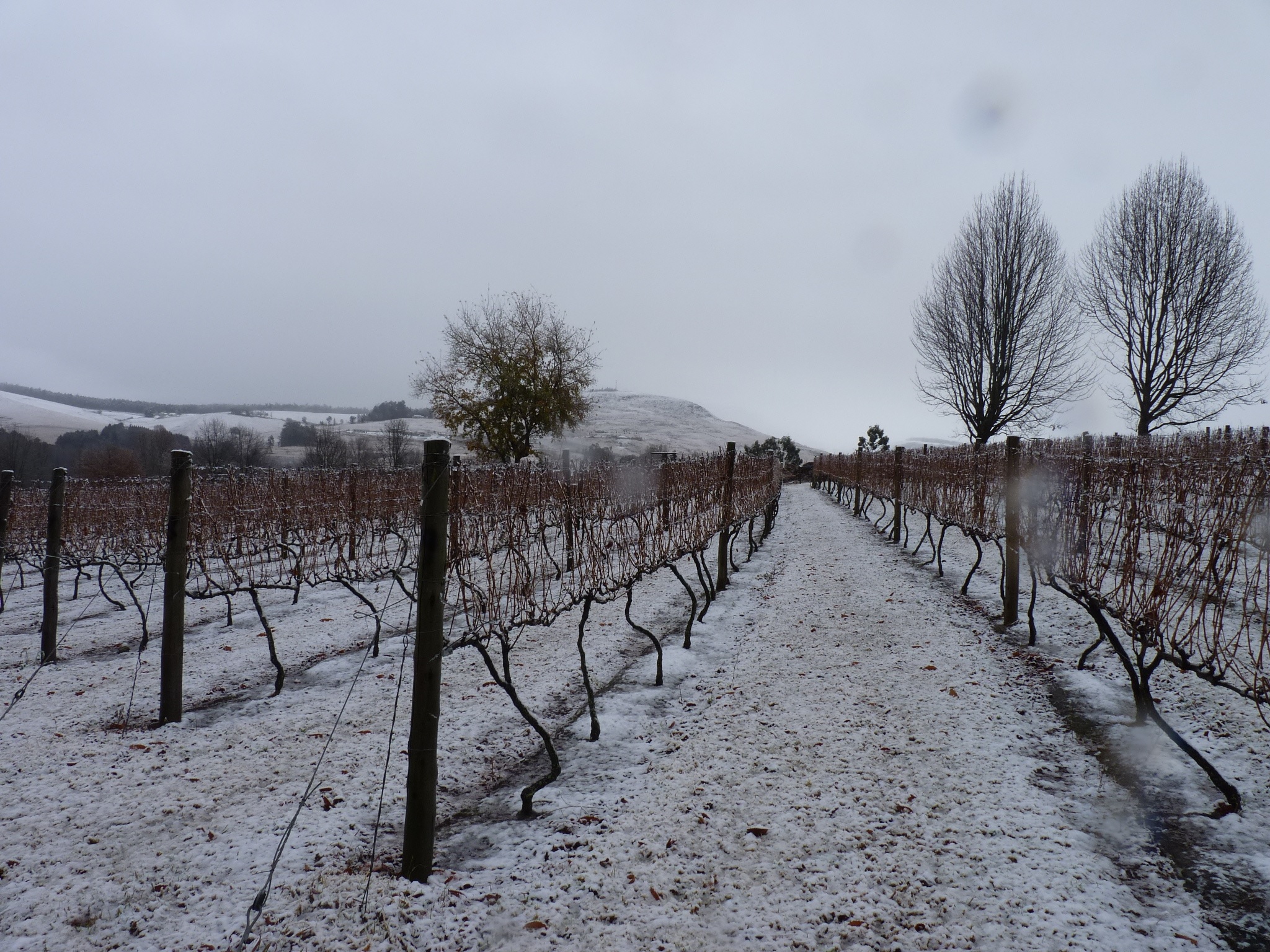
Abingdon Estate, Lion’s River, KZN in winter
Flying east over Lesotho into the KwaZulu Natal Midlands and Lions River, one reaches Ian and Jane Smorthwaite’s Abingdon Estate (1142 metres). Their three hectares of vines comprise a basket of Sauvignon Blanc, Viognier (a consistent performer), Chardonnay, Shiraz, Cabernet Sauvignon and Nebbiolo, the last enjoying the cool autumns and seemingly rot resistant. Sparkling wine does well, as harvest occurs before summer rains, which then bring hail and mildew. Vervet monkeys offer another challenge. Around 1500 kilometres from Stellenbosch, Abingdon Estate wines are certified WO Lions River.
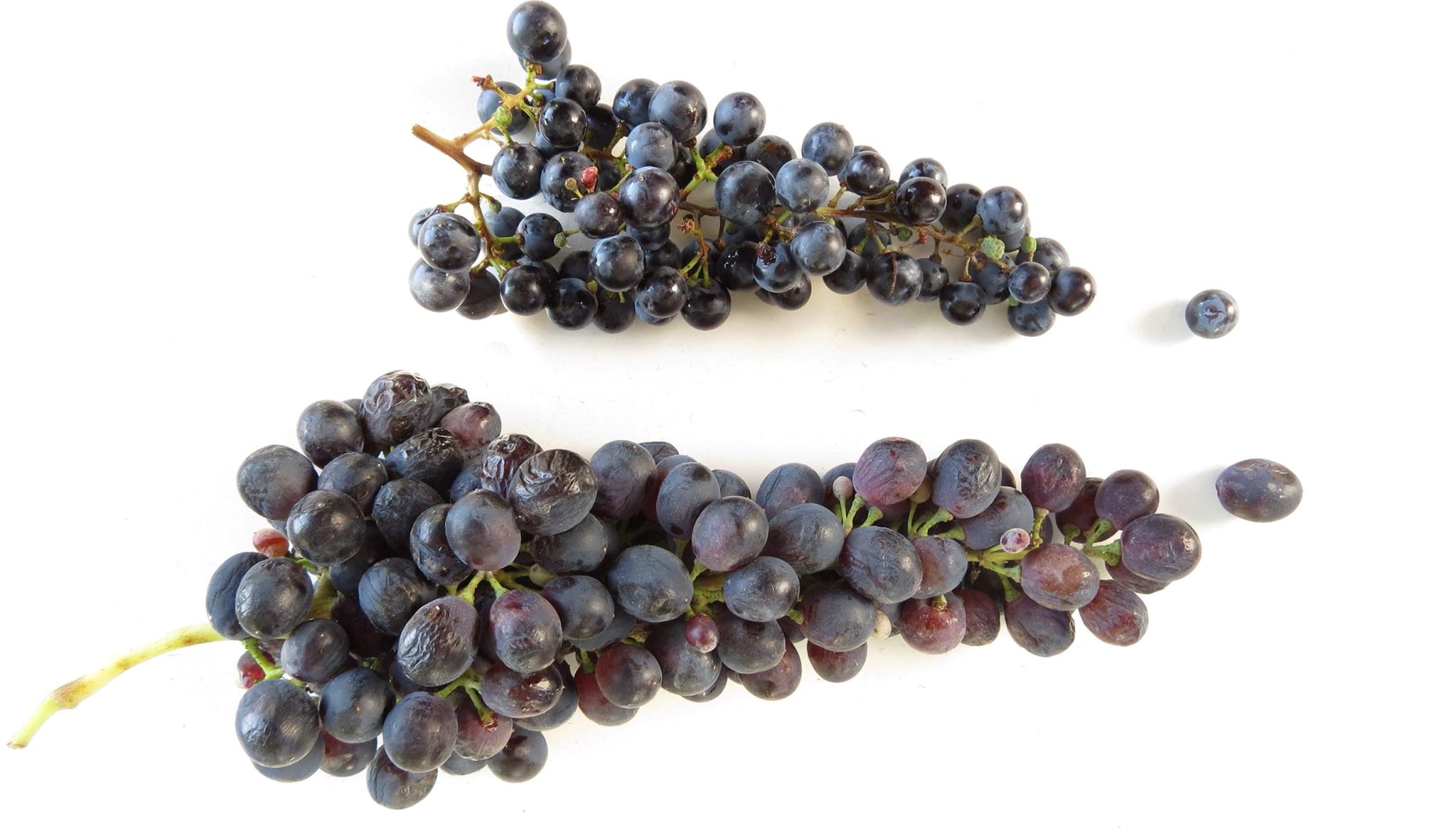
Comparison of shiraz bunches from Mount Sutherland (top) and Pella Stellenbosch
Probably the harshest of elevated sites is Daniël de Waal’s Mount Sutherland vineyards (1500 metres) in the Northern Cape; the 360 kilometre drive to Stellenbosch, where the grapes are vinified, takes around 4.5 hours. The vines endure both white and black frost, snow, between 200 and 300mm winter rain and diurnal summer temperatures varying between 9C and 30C. The light intensity in Sutherland’s clean air allows grapes ripen at moderate alcohols (and offers incredible views of the night skies from the Southern African Large Telescope). Started in 2004, the project remains a work in progress; Syrah is successful but not all varieties have worked and frost completely ruled out 2017 harvest. Super Single Vineyards Mount Sutherland Wines fall under WO Sutherland-Karoo.
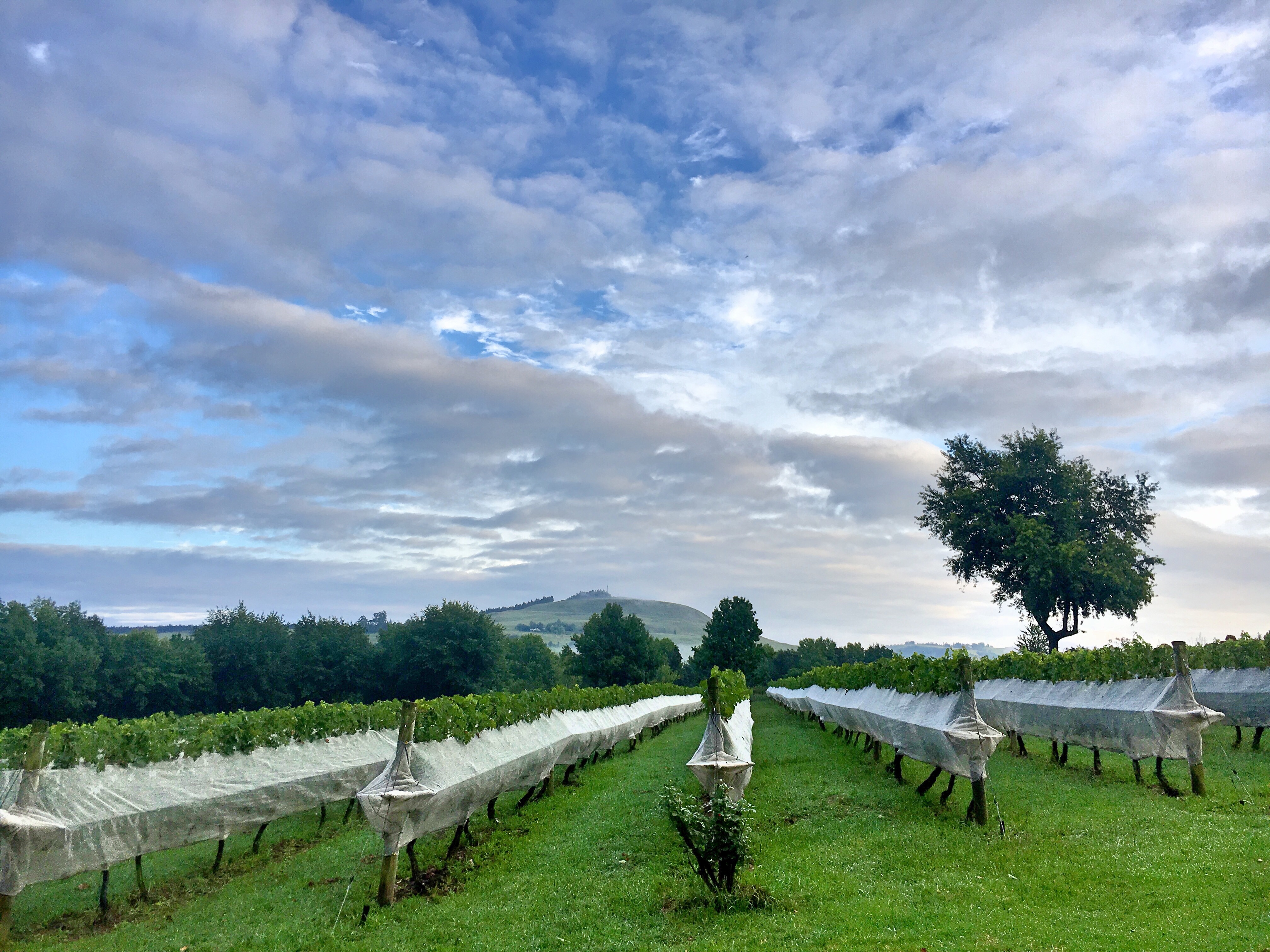
Abingdon Estate, Lion’s River, KZN. Vineyards in summer, netted against birds
Hennie and Bertie Coetzee’s Lowerland vineyards in Prieska grow at 1000 metres in what Bertie describes as ‘desert climate’, which made organic certification an easy option. Vines, just nine hectares, are part of this large, diverse farm. White varieties, like Colombard and Viognier, do well though early frost is a challenge. Warm summers with cold nights suit later-ripening reds: Tannat, Petit Verdot and Cabernet Sauvignon do extremely well, despite the ‘onslaught of Chauffer Beetles, which are big fans of Cabernet.’ Judges on a prestigious South African show were also fans of a Landzicht Cabernet from Lowerland fruit, awarding it a Trophy over many Stellenbosch (900 kilometres away) examples. Coetzee believes the area’s biggest problem is the negative perception of wine from Northern Cape, ‘so we persuaded the authorities to demarcate WO Prieska, as it’s unknown for wine.’
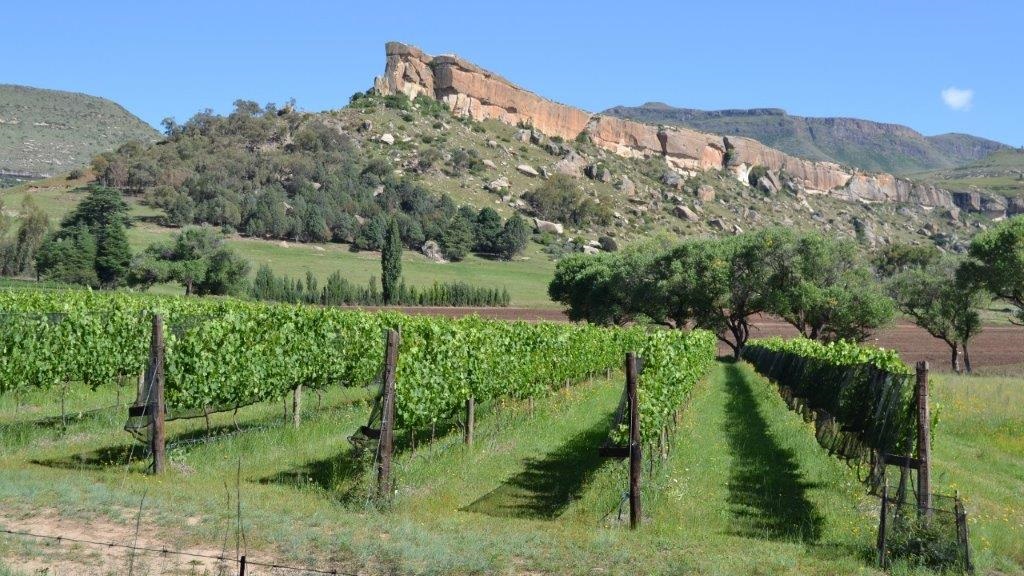
Mile High Vineyards, Eastern Free State
Jeffrey’s Bay in the Eastern Cape is better known for surfing than wine-growing, but the former and concern about the long-term effects of climate change, influenced Edgebaston’s David Finlayson decision to set up small, experimental vineyards. The alkaline, deep and well-draining red shale soils are very different from those in Stellenbosch, some 600 kilometres east. While J-Bay isn’t quite as cold as Stellenbosch, it isn’t as hot in summer. Problem pests include locusts, grasshoppers and birds; netting is a necessity. The first tiny crop of Syrah and Grenache were harvested in 2019; at this early stage, both name and labels are undecided and WO St Francis Bay has yet to be approved. Finlayson doubts this will ever become a major wine-growing area; ‘fruit makes so much more money.’
None of these vineyards are likely to become major players in the industry, but they certainly add to the diversity of South African wines.
- Angela Lloyd